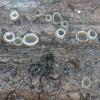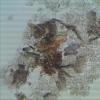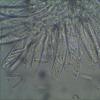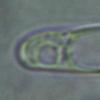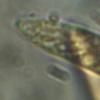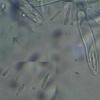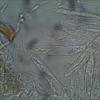
27-11-2025 12:01
Thomas Læssøehttps://svampe.databasen.org/observations/10496727

27-11-2025 11:46
Thomas Læssøehttps://svampe.databasen.org/observations/10493918

17-09-2025 10:50
Heather MerryleesHi there!I am hoping for any advice on the identif

29-11-2025 08:40
 Andreas Millinger
Andreas Millinger
Hello,on a splintered part of a branch on the grou

28-11-2025 16:45
Nogueira HéctorNovember 23, 2025 Requejo de Sanabria (León) SPAI

25-11-2025 14:24
Thomas Læssøehttps://svampe.databasen.org/observations/10490522

27-11-2025 15:41
Thomas LæssøeSpores brownish, typically 4-celled; 26.8 x 2.4;

27-11-2025 11:31
Thomas LæssøeCollectors notes: Immersed ascomata, erumpent thro

23-09-2025 13:31
Thomas Læssøehttps://svampe.databasen.org/observations/10534623

26-11-2025 18:13
The entire run of Mycotaxon is now available throu
Pyrenopeziza s/ Cirsium palustre.
Luc Bailly,
08-02-2012 18:25
Cela fair plusieurs fois que je ne parviens pas à mettre de nom là-dessus. Hormis un nom de genre: Pyrenopeziza.
Récolté le 13.08.11, sur tiges mortes de Cirsium palustre. Réserve naturelle domaniale de la Grande Fange de Bihain, Vielsalm, prov. Luxembourg, B., env. 550 m d'altitude.?
Apoth. sessiles, en groupes ou colonies, en coupe fermée puis aplatie, -> 0.8 mm. Marge fimbriée. Couleur gris-brun fuligineux, très sombre à l'état jeune. Excip. semblant un peu poilu ou du moins nettement furfuracé.
Exc. ectal banal, text. glob., brun. Poils atteignant 45 µ.
Asques 8-sp., sp. bisériées, IKI BB, (30) 38-50 x (5.2)6-7(7.5) µ. Crochets non remarqués ou absents.
Sp. un peu asymétriques, parf. symétriques, hyalines, huile = 2, non septées, (7)8-10(11) x (1.5)1.8-2.2 µ.
Paraphyses cylindriques, à peine réfringentes, x 2.5-3-3.5 µ p. ex. KOH nul.
Amitiés - LUC.
Raúl Tena Lahoz,
08-02-2012 20:32

Re : Pyrenopeziza s/ Cirsium palustre.
Maybe Pyrenopeziza urticicola.
Salut,
Raúl
Salut,
Raúl
Luc Bailly,
09-02-2012 16:17
Re : Pyrenopeziza s/ Cirsium palustre.
Yeah, but I think I excluded that one due to the size of the spores, way too big in my sample IMO. (I corrected the data's. Meh, distraction.)
Oh, so, Bernard Declercq's key gives me Pyrenopeziza escharodes, which matches fine with the size of spores and hair, and which gives oil -> 1.5, which is a bit lower than on my sample, but noot much. Except if one has a better solution, I think I'll stick with P. escharodes.
Cheers - LUC.
Oh, so, Bernard Declercq's key gives me Pyrenopeziza escharodes, which matches fine with the size of spores and hair, and which gives oil -> 1.5, which is a bit lower than on my sample, but noot much. Except if one has a better solution, I think I'll stick with P. escharodes.
Cheers - LUC.
